There exists a delicate and charming species that captures the essence of grace and beauty – the Pink Bell Shaped Flowers. These beautiful blooms, with their soft pastel hues and elegant bell-like forms, have long captivated the hearts of botanists and nature lovers alike.
The charm of these flowers lies in their vibrant color and unique shape that resembles tiny bells moving in the breeze. As you dive deeper into the fascinating world of these blooms, you come to know the facts about their origins, symbolic meanings, and cultural significance.
About bell-shaped flowers
The bell-shaped flowers are known for their elegance and the shape of the flowers that attract the attention of humans and animals as well. When you grow them and they start growing you will notice that they produce different textures and shapes. When they bloom with these different textures and shapes they provoke people’s attraction towards them.
You can find them in the wild areas and many gardeners love to grow them in their gardens so they do so. These can be found with many companion plants which are different plants such as green, blue, purple, white, pink, and many more. You can use the flower for different purposes such as:
- Decoration
- In weddings
- Making wreaths
- Lovely gifts
32+ best pink bell shaped flowers to grow in your garden
The following are the best pink bell-shaped flowers you can grow in your garden:
Coral Bells (Heuchera)
- These flowers make vibrant foliage and beautiful bell-shaped flowers that make it famous in the market.
- You need to give them a half-shade area, where they can grow.
- They prefer well-drained soil.
- A moderate water schedule is required for them.
- If you want to maintain their color you have to provide them with fertilizer when they needed.
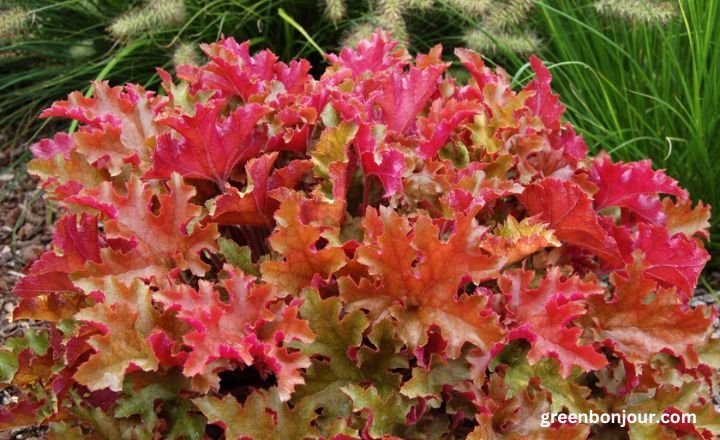
Impatiens (Impatiens)
- The botanic name of this type is Impatiens.
- They are known for their brilliant pink blooms.
- They grow to a certain height that is up to 1 to 3 feet.
- You need to place them in shady to semi-shady locations.
- Well-drained soil is required for the growth of this plant.
- They can survive with low maintenance is good news for beginners.
Lupine (Lupinus)
- The botanical name of this plant is Lupinus.
- They produce tall and elegant pink flowers which is the main reason behind its popularity.
- They can grow in partial sun and full sun as well.
- They required well-drained soil.
- You have to follow a strict watering schedule throughout the season.
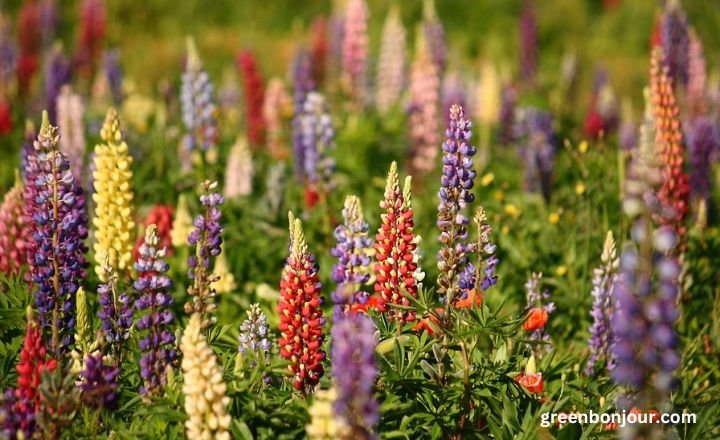
Hyssop (Hyssopus officinalis)
- You can find it by its botanical name which is Hyssopus offcinalis.
- They produce lovely pink flowers which are loved by most of the people.
- They reach a height of about 2 to 3 feet.
- They want full sun for their growth.
- A well-drained soil is their primary need.
- You need to follow a regular watering schedule.
- You need to prone the plant that helps to maintain the shape and development of new growth.
Dahlia (Dahlia)
- The botanical name of this plant is Dahlia.
- They become famous for their showy bell-shaped pink blooms.
- They can reach heights up to 3 to 5 feet.
- They produce lush green foliage which is considered a backdrop to their pink flowers.
- Full sunlight is required for its growth.
- You can say that well-drained soil is the primary source for its growth.
- The plants do need to be regularly watered.
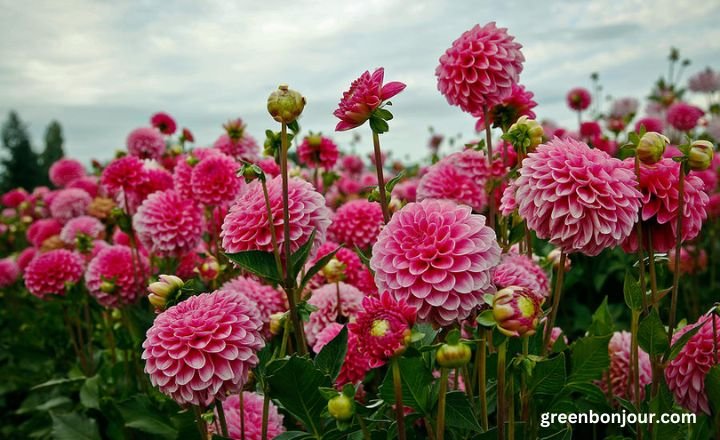
Campion (Silene)
- The botanical name of the campion is Silene.
- They are dainty perennial plants that produce bell-shaped flowers.
- These produce bloom in slender stems.
- The plant can reach a height of 1 to 2 feet.
- You need to give them well-drained soil.
- You have to keep your plant in partial shade or full sun.
- A regular watering schedule is needed for its growth.
Chrysanthemum (Chrysanthemum)
- This plant is also known as Chrysanthemum.
- They produce various shades of pink bell-shaped flowers.
- The versatile flowering is known for its intricate and layered petals.
- Different plant sizes are available in the market, and you can find them easily.
- This plant requires regular watering.
- You also need to prune the plant to maintain the health of the plant.
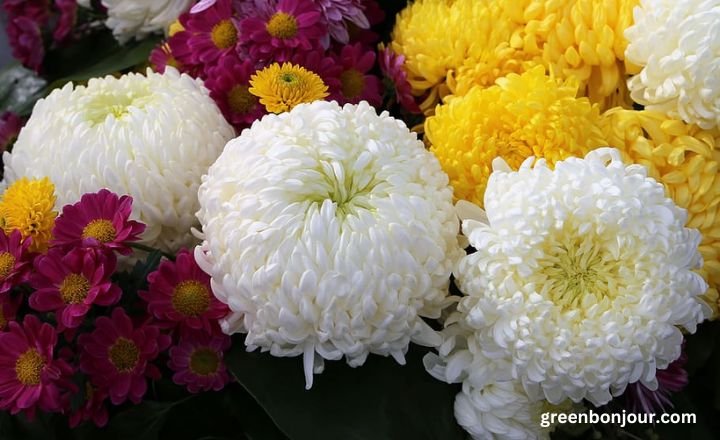
Astilbe (Astilbe)
- The second name of this plant is Astilbe.
- This is basically a perennial plant.
- They have feathery pink flowers that add color to the garden.
- 1 to 3 feet is their highest height.
- They want to grow in moist areas.
- You can give them well-drained soil.
- You need to provide the plant with regular watering.
- You need to mulch to maintain the moisture levels of the plant.
Zinnia (Zinnia)
- The botanical anime of this plant is Zinnia.
- They exist in different shades of pink.
- Different sizes of plants are available in the market.
- They can reach up to 2 to 3 feet.
- You have to give them full sun and well-drained soil.
- To maintain the moisture you need to water the plant regularly.
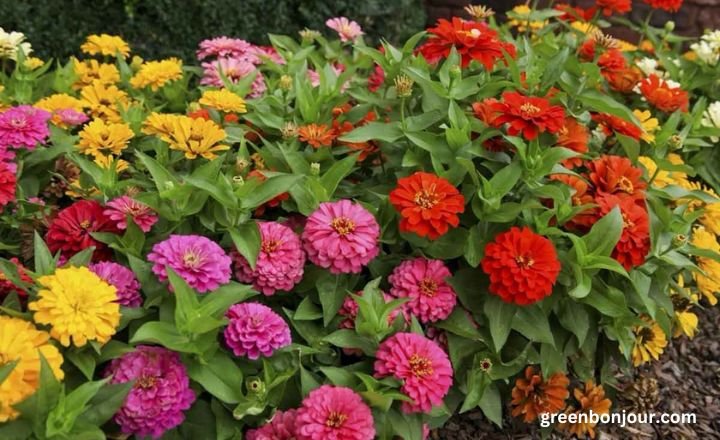
Anemone (Anemone coronaria)
- The scientific name of this flower is Anemone Coronaria.
- These can be found with pink flowers with contrast centers.
- You may know that these are perennial branches that can grow up to a height of 12 feet.
- You need to maintain the moisture by planning them in well-draining soil and partial shade.
- A regular watering schedule is needed so that the soil is kept moist evenly.
Tulip (Tulipa)
- Tulips are also known as Tulipa.
- You can have them in the category of class 6 spring flowers.
- You can find them in different sizes.
- They exist in pink bells.
- They can make the boundaries of your garden pretty.
- You need to give them the proper requirements they need.
- A watering schedule must be followed.
- You need to grow the plants during their growing season.
- During this period the plant will be able to produce vibrant pink blooms in the spring.
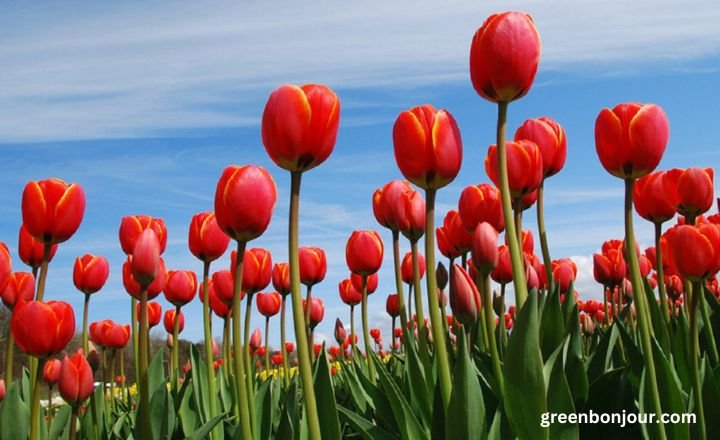
Cherry Blossom (Prunus serrulata)
- The second anime for this flower is Prunus serrulata.
- They produce small pink bell-shaped flowers.
- Their blooming can vary because of different sizes and areas as well.
- They want well-drained soil for their growth.
- They require full sun for their best growth.
- You have to prune the plant to give it the desired shape.
- Pruning will also enhance their look.
Oriental Lily (Lilium orientalis)
- The botanical name of the Oriental lily is Lilium orientalis.
- They are famous for their large-sized flowers and their pleasant fragrance.
- They come in different varieties and shaded and you can grow them as well.
- The height of the plant is up to 3 to 7 feet which adds elegance and more color to the gardens.
- Like every other plant, they need well-drained soil.
- They can survive in full sun as well as in partial shade.
- You need to follow a strict watering schedule. It must be needed.
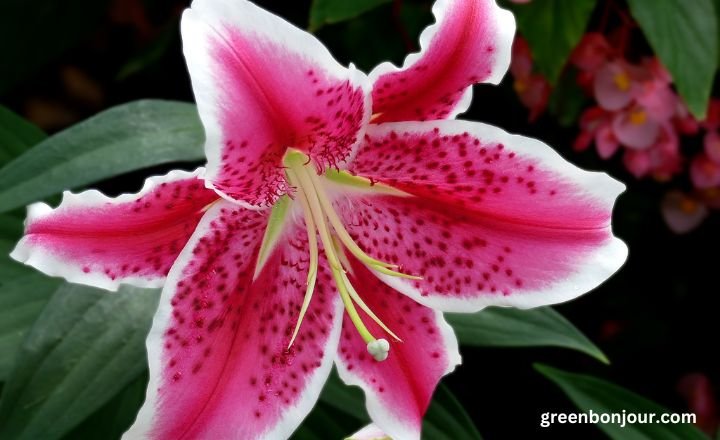
Petunia (Petunia)
- You can search for this flower with the Petunia name,
- They exist in a wide range of pink hues which are versatile annual plants.
- They exist in different sizes taller as well as in smaller sizes.
- A well-draining soil is required for them.
- They prefer full sunlight for their growth.
- You need to follow a proper watering schedule and deadheading to keep the plant blooming throughout the season.
Camellia (Camellia)
- The second name of this flower is Camellia.
- You will notice that they exist in the market having pink blooms which are evergreen shrubs or small trees.
- They can grow up to 6 to 12 feet.
- This plant has glossy, dark green leaves with flowers that have different size and shape.
- A well-drained soil with partial shade is required for their best growth.
- Mulching your plant and best water scheduling are the main requirements for peak growth.
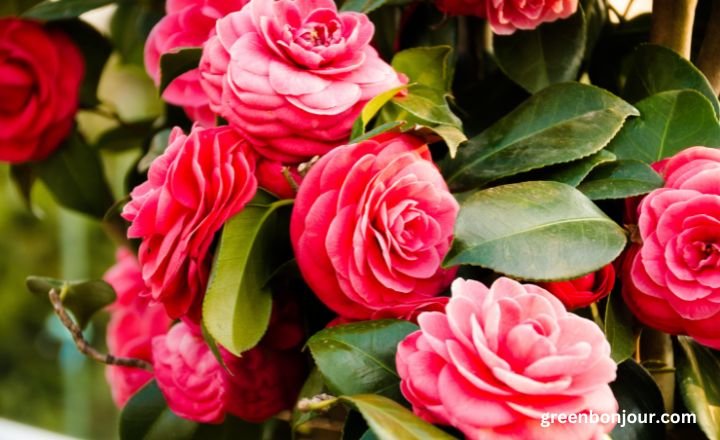
Peony (Paeonia)
- It is botanically known as Paeonia.
- You will find it under the herbaceous perennials plant category.
- They can grow up 3 feet tall.
- These used to be considered the symbols of beauty, grace, and prosperity.
- The plant is loved for garden planting and floral arrangements.
- You have to provide them with well-drained soil.
- They love partial to full sun areas.
- You need to follow a regular watering schedule for them.
Aster (Aster)
- Their botanical name is the same as they are known in English.
- Basically, they are perennials having pink daisy-like flowers.
- Their different species make them different in size and color from each other.
- They grow up to 3 feet tall.
- You can find a profusion of small, vibrant pink flowers that help to attract pollinators.
- Well-drained soil and full sunlight are preferred by them.
- Water them regularly and prune the plants when it’s needed.
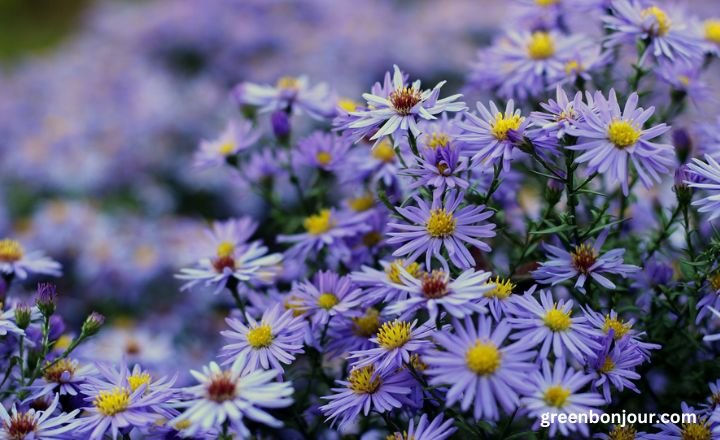
Foxglove (Digitalis)
- They are also known as Digitalis.
- They come from tall biennial plants.
- You can use them as a showcase that are beautiful spires of tubular pink bell-shaped flowers.
- You will find them 3 to 6 feet high.
- You need to give them partial shade and well-drained soil so that they can grow quickly.
- A watering schedule must be followed.
- You need to handle the plant carefully because of their potential toxicity which can be harmful if ingested.
- Keep the plant away from children and pets.
Carnation (Dianthus caryophyllus)
- The botanical name of this plant is Dianthus caryophyllus.
- They are perennial plants,
- You will find them in various sizes such as dwarf, medium, and tall varieties.
- This plant produces a group of charming flowers with ruffled petals.
- They enjoy well-drained soil and full sunlight areas.
- Water them regularly to promote the blooming of the plant.
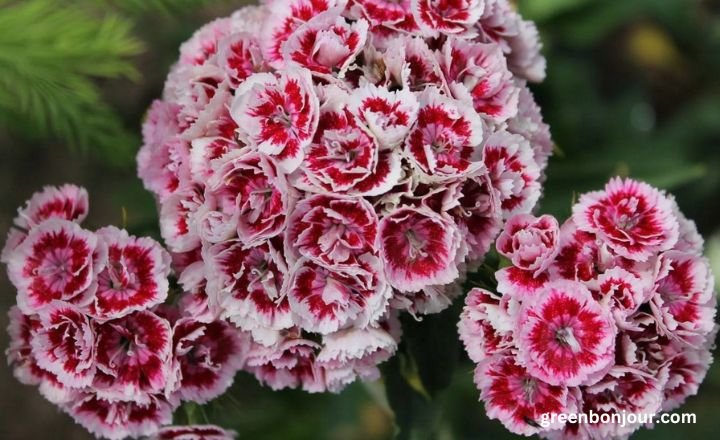
Begonia (Begonia)
- This plant is also known as Begonia.
- You can find them in various sizes and colors as well.
- They are versatile annual or perennial plants.
- You can find this plant in different sizes from compact to taller sizes that you can plant in a container and garden beds.
- They grow up to 1 to 2 feet.
- They prefer well-draining soil.
- They enjoy partial shady areas.
- To maintain the plant you need to water them regularly.
Geranium (Geranium)
- They are also botanically known as geranium.
- They used to be known as perennial plants.
- They have various growth habits and their size depends on the provided conditions.
- They love to grow in well-drained soil and need full sun to partial shade of light.
- You need to water the plant regularly in order to maintain the tidy appearance of the plant.
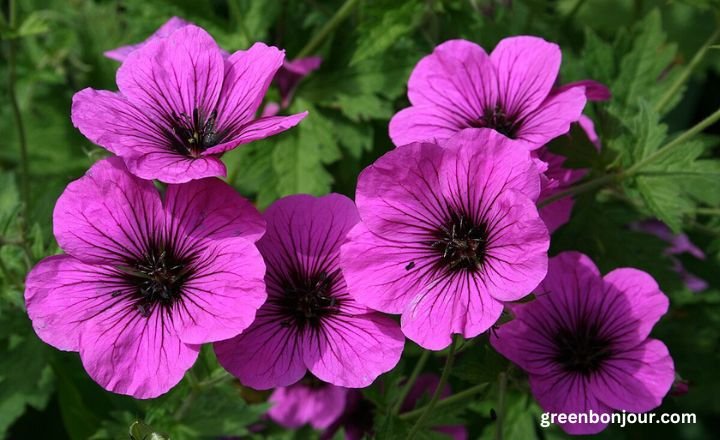
Hollyhock (Alcea)
- This plant is botanically known as Alcea.
- They are stately biennial or perennial plants.
- They produce tall spires of pink bell-shaped flowers.
- They can grow up to 6 to 8 feet.
- They contain attractive leaves.
- Full sunlight with well-drained soil is the peak requirement.
- You need to do regular watering.
- To give support you require taking as per their height and prevent the toppling.
Yarrow (Achillea millefolium)
- You can also have a]their second name which is Achillea millefolium.
- They come under the category of Hardy perennial plants.
- They used to produce clusters of pink bell-shaped flowers.
- They are famous for their feathery fern-like foliage.
- They can grow up to 1 to 3 feet.
- They used to grow flat-top flower clusters with various shades of pink.
- The plant grows well in dream soil and full Sun.
- You require minimal watering after establishing to increase blooming.
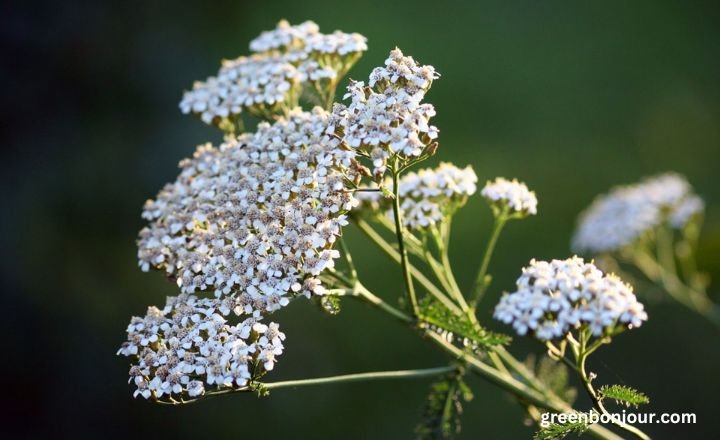
Fuchsia (Fuchsia)
- Their botanical name is the same as they are known in English.
- They are considered as cultivated flowers.
- They grow as shrubs, training Vines, or upright varieties.
- They exist in different sizes and shapes.
- They prefer well-drained soil with partially sunny areas.
- They require regular watering.
- You need to Prune the plant to maintain its shape and to increase new growth in the plant.
Mandevilla (Mandevilla)
- They are considered as tropical plants.
- They are able to produce turning pink bell-shaped flowers that have a trumpet-like shape.
- They can grow up to 8 feet tall.
- They produce glossy leaves.
- Plant them where they can get full sun with well-drained soil.
- You have to water the plant regularly and provide support for the climbing.
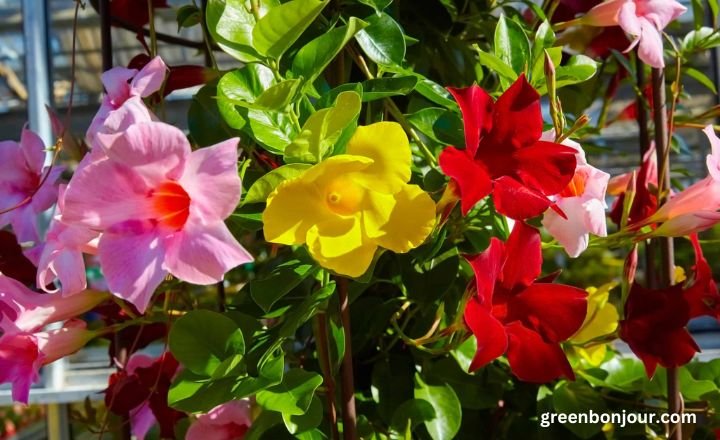
Creeping Phlox (Phlox stolonifera)
- They used to call Phlox stolonifera botanically.
- They come under the low-growing perennial plants.
- They produce dense pink bell flowers by creating a beautiful ground cover.
- They can’t exceed the height of 6 inches but can spread over two feet wide.
- They love the place where they can get full sunlight and well-drained soil.
- Pruning is necessary so that they can grow better.
- A watering schedule should be followed.
Hibiscus (Hibiscus)
- They come under tropical shrubs.
- They grow in Lord showing pink flowers and having charming looks.
- They can grow up to 6 to 15 feet which depends upon their varieties.
- They have stunning looks which attract pollinators such as butterflies and hummingbirds.
- They give a beautiful look to your garden.
- The plant grows well when it receives full sunlight and well-drained soil.
- You need to water the plant regularly to maintain healthy growth.
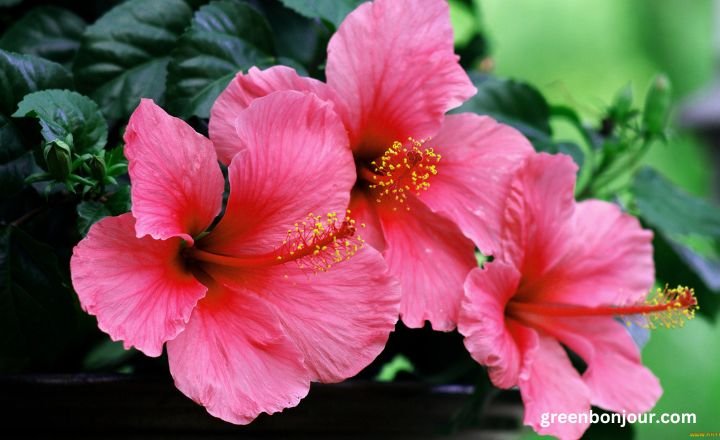
Turtlehead (Chelone)
- They are botanically called Chelone.
- They are perennial plants.
- They used to produce lovely pink bell-shaped flowers that are shaped like a turtle’s head.
- They can grow up to 2 to 3 feet.
- You have to maintain a light where they can have partial sunlight and well-drained soil.
- It is necessary to give them proper water.
Snapdragon (Antirrhinum)
- The second name of this plant is Antirrhinum.
- You used to be considered a charming annual or perennial plant that has spiky key blooms with various shades of pink.
- As this plant has different varieties, so according to different varieties they can grow up to 6 inches tall.
- You need to look at the location to provide them with the required areas.
- To increase their growth, you have to follow a strict watering schedule.
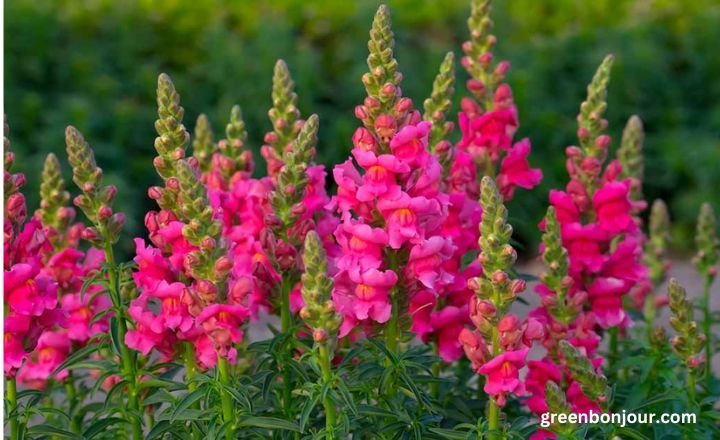
Swamp Lily (Crinum powellii)
- This is also called Crinum powellii.
- This comes under the perennial plants.
- They produce large trumpet-like flowers of light pink color.
- They used to bloom in late summer but give a beautiful look.
- The size of the flower is 5 inches wide.
- The plant can grow between 3 to 5 feet tall.
- When you grow the plant with full Sun and drain soil it will give you a good result.
Conclusion
There exists a delicate and charming species that captures the essence of grace and beauty – the Pink Bell Shaped Flowers. These beautiful blooms, with their soft pastel hues and elegant bell-like forms, have long captivated the hearts of botanists and nature lovers alike.
The charm of these flowers lies in their vibrant color and unique shape that resembles tiny bells moving in the breeze. As you dive deeper into the fascinating world of these blooms, you come to know the facts about their origins, symbolic meanings, and cultural significance.
FAQs
What is the plant called with bell shaped flowers?
The graceful bellflower (campanula) seems to have sprung from the world of fairies. Let yourself be enchanted by their beautiful, delicate flowers and add their summer freshness to your garden.
What are perennial pink bell shaped flowers?
The Creeping phlox plants come under low-growing perennial plants. They tend to grow in a dense pink bell-shaped carpet flower by creating a beautiful ground cover.